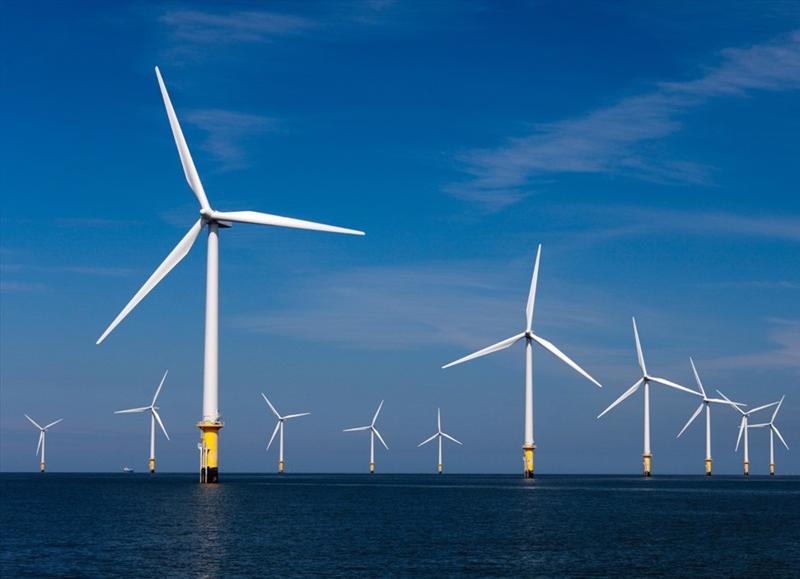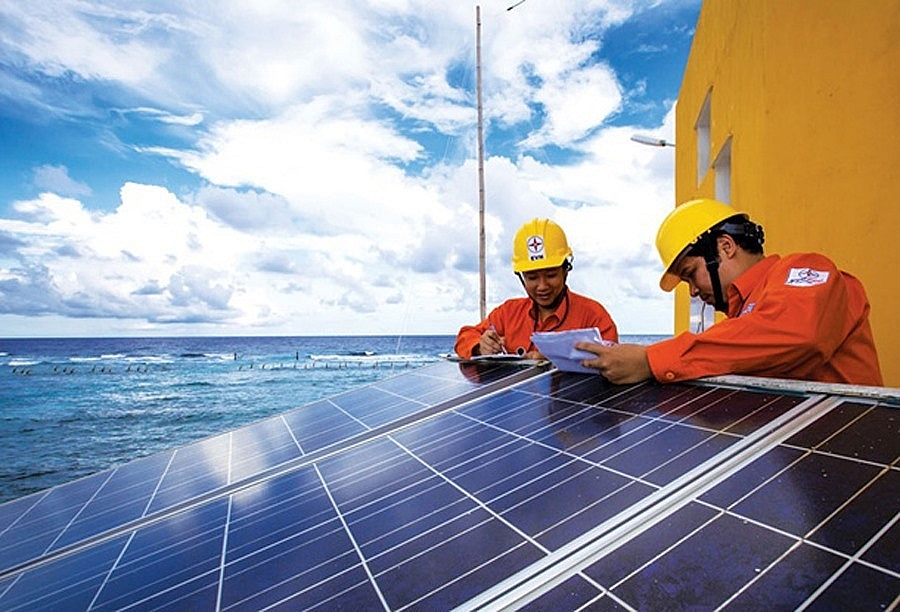On May 30, 2025, the Ministry of Industry and Trade issued Decision No. 1509/QD-BCT, approving the Implementation Plan for the Revised National Power Development Plan for the period 2021 - 2030, with a vision toward 2050 (referred to as the Implementation Plan for the Revised Power Development Plan VIII).
The plan is designed to concretize Decision No. 768/QD-TTg dated April 15, 2025, of the Prime Minister; aiming to meet electricity demand for economic and social development in each period, ensuring power development stays ahead.

Ministry of Industry and Trade issues Implementation Plan for Revised Power Development Plan VIII.
Total power capacity increases sharply
According to the Master Plan, by 2030, the total capacity of LNG thermal power will be 22,524MW, domestic gas thermal power 14,930MW, coal thermal power 31,055MW, hydropower 33,294 - 34,667MW, solar power 46,459 - 73,416MW, and onshore wind power from 26,066 - 38,029MW.
Offshore wind power serving domestic demand aims to reach 6,000MW by 2030 and increase to 17,032MW by 2035.
For the two Ninh Thuan nuclear power plants 1 and 2, each is expected to have a capacity from 2,000 to 3,200MW, planned to operate during 2030 - 2035.
Specifically, biomass power, waste to energy, residual heat from industrial processes, etc., are also encouraged to be exploited with a total biomass power capacity of 1,523 - 2,699MW; waste to energy and solid waste are 1,441 - 2,137MW.
By 2030, total battery storage capacity is expected to reach about 10,000 - 16,300MW. Concentrated solar power development must be combined with battery storage installation with a minimum rate of 10% capacity and 2 hours of storage.
Promoting imports and exports
Along with strongly developing domestic power generation sources, the Implementation Plan for the Revised Power Development Plan VIII also clearly defines strategic orientations related to electricity import and export within the ASEAN region and the Greater Mekong Subregion.
Accordingly, Vietnam will promote electricity imports from countries with large hydropower potential. It is expected that by 2030, the total imported capacity from Laos will reach about 9,360 - 12,100MW, based on bilateral cooperation agreements signed between the two governments, and taking advantage of import potentials in line with interconnection conditions from China, on a reasonable scale. If favorable conditions and reasonable costs occur, the maximum scale may be increased or the time for importing electricity from Laos to the Northern region may be advanced.
Conversely, electricity export is also identified as a new key point in regional economic cooperation. By 2030, Vietnam aims to increase electricity export capacity to Cambodia to about 400MW.
By 2035, electricity export capacity to potential markets such as Singapore, Malaysia, and some other regional partners could reach 5,000 - 10,000MW and maintain a minimum scale of 10,000MW by 2050. This export volume may be adjusted higher depending on actual demand from importers on the principle of ensuring economic efficiency, national energy security, and national defense security.
To serve electricity export activities and new energy production, the Ministry of Industry and Trade has identified potential areas, including the Central and Southern regions, with export scales from 5,000MW to 10,000MW.
Using renewable energy to produce new types of energy (such as green hydrogen, green ammonia) to meet domestic demand and export: Priority is given to development in areas with good renewable energy potential and favorable grid infrastructure; the development scale targets 15,000MW (mainly offshore wind power).
The Ministry will submit to the competent authorities for approval of electricity export policies for each specific project, ensuring compliance with current legal regulations.

Implementation Plan for Revised Power Development Plan VIII also clearly outlines strategic orientations related to electricity import and export.
Investment in power grids and power supply for difficult areas
According to the Master Plan, approximately 911,400 households in 14,676 villages and hamlets across 3,099 communes nationwide will be provided with electricity either through the national power grid or from renewable energy sources.
Among these, about 160,000 households currently have no access to electricity, and 751,400 households require grid upgrades, across 14,676 villages and hamlets in 3,099 communes. Of these, 1,075 communes (in 43 provinces and cities) are located in border areas and areas with extreme hardship, including the provinces and cities of Dien Bien, Lao Cai, Yen Bai, Ha Giang, Bac Giang, Son La, Hoa Binh, Phu Tho, Tuyen Quang, Thai Nguyen, Thanh Hoa, Ha Tinh, Quang Binh, Quang Nam, Quang Ngai, Kon Tum, Dak Nong, Dak Lak, Bac Liêu, An Giang, Can Thơ, Cao Bang, Lai Chau, Bac Kan, Lang Sơn, Nghe An, Hue, Binh Dinh, Phu Yen, Gia Lai, Lam Dong, Binh Thuan, Binh Phuoc, Tay Ninh, Ben Tre, Tra Vinh, Kien Giang, Soc Trang, Long An, Tien Giang, Vinh Long, Dong Thap, Hau Giang, and Ca Mau. The remaining 2,024 communes are in other areas.
In addition to serving household needs, the program also aims to supply electricity to 2,478 small and medium-sized pumping stations (in 13 provinces) in the Mekong Delta region, including Ben Tre, Tra Vinh, An Giang, Kien Giang, Can Tho, Bac Lieu, Soc Trang, Long An, Tien Giang, Vinh Long, Dong Thap, Hau Giang, and Ca Mau — while also providing electricity to the local population.
The plan also includes bringing electricity from the national grid or renewable energy sources to remaining islands such as: Con Co Island in Quang Tri Province; Tho Chau and An Son - Nam Du Islands in Kien Giang Province; and Con Dao District in Ba Ria - Vung Tau Province.
Forming renewable energy industrial hubs
The Ministry of Industry and Trade has proposed the development of two inter-regional renewable energy industrial and service hubs.
Accordingly, the northern hub will be located in areas such as Hai Phong, Quang Ninh, and Thai Bình, with the potential to expand into neighboring regions in the future. This hub will include factories manufacturing equipment for wind and solar power, logistics services, and specialized seaports to support the construction, operation, and maintenance of renewable energy projects.
In addition, it will feature green industrial parks with low carbon emissions, along with research and training centers for specialized human resources in the clean energy sector.
Similarly, the southern hub is expected to be located in Ninh Thuan, Binh Thuan, Ba Ria - Vung Tau, and Ho Chi Minh City — areas with outstanding potential for wind and solar energy, as well as port infrastructure.
The development model here will mirror that of the northern hub, aiming to build a complete value chain for the renewable energy industry in the southern region.

Paying attention to communication on power saving and preparing for drafting the Revised Law on Efficient and Economical Use of Energy
Major energy corporations are assigned critical responsibilities
The organization and implementation are specifically delegated to each ministry, sector, locality, and key enterprise in the energy industry.
Accordingly, the Ministry of Finance will coordinate with the Ministry of Industry and Trade to develop electricity pricing policies based on market mechanisms, along with appropriate financial mechanisms and incentives to support the implementation of the master plan.
Relevant ministries and sectors will proactively propose policies and remove obstacles. Provincial and municipal People’s Committees will update planning, allocate land, clear project sites, and supervise the progress of power projects.
For the professional units under the Ministry of Industry and Trade, they are tasked with regularly inspecting and monitoring the progress of power generation and grid projects, proposing solutions for delayed projects; closely tracking fuel supply, especially gas and coal for power generation; expediting the construction of LNG receiving infrastructure; actively promoting electricity saving; and preparing a draft to amend the Law on Efficient and Economical Use of Energy.
In the corporate sector, Vietnam Electricity (EVN) plays a core role in ensuring a safe and stable power supply. EVN is responsible for implementing assigned power generation and transmission projects, reviewing the overall supply-demand balance of the system, and closely coordinating with localities to resolve issues related to site clearance and grid connections. The Group is also tasked with improving labor productivity, reducing costs, and innovating its governance to lower electricity prices. EVN must take full responsibility if any project delays affect the security of the electricity supply.
Translator: Vân Ly
Share